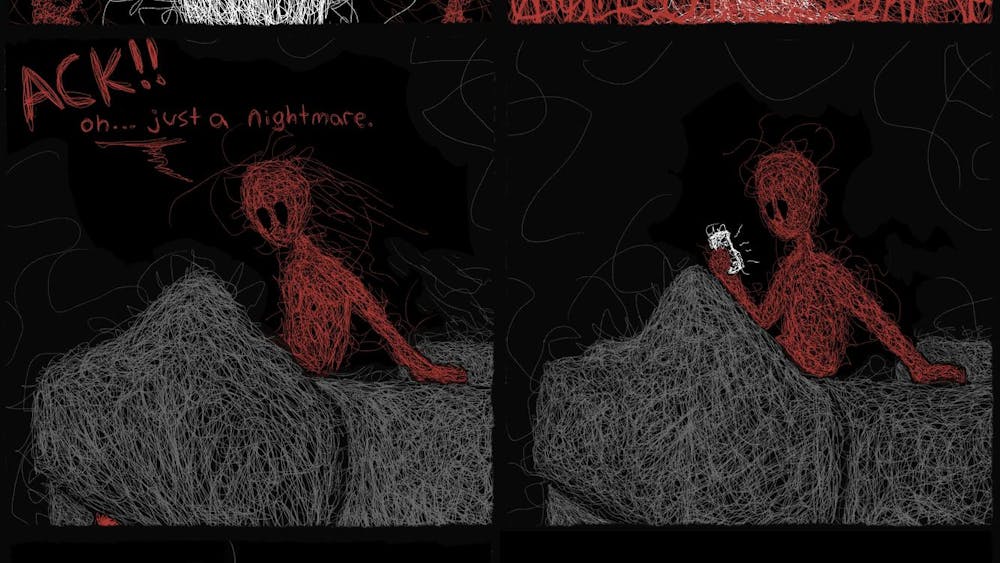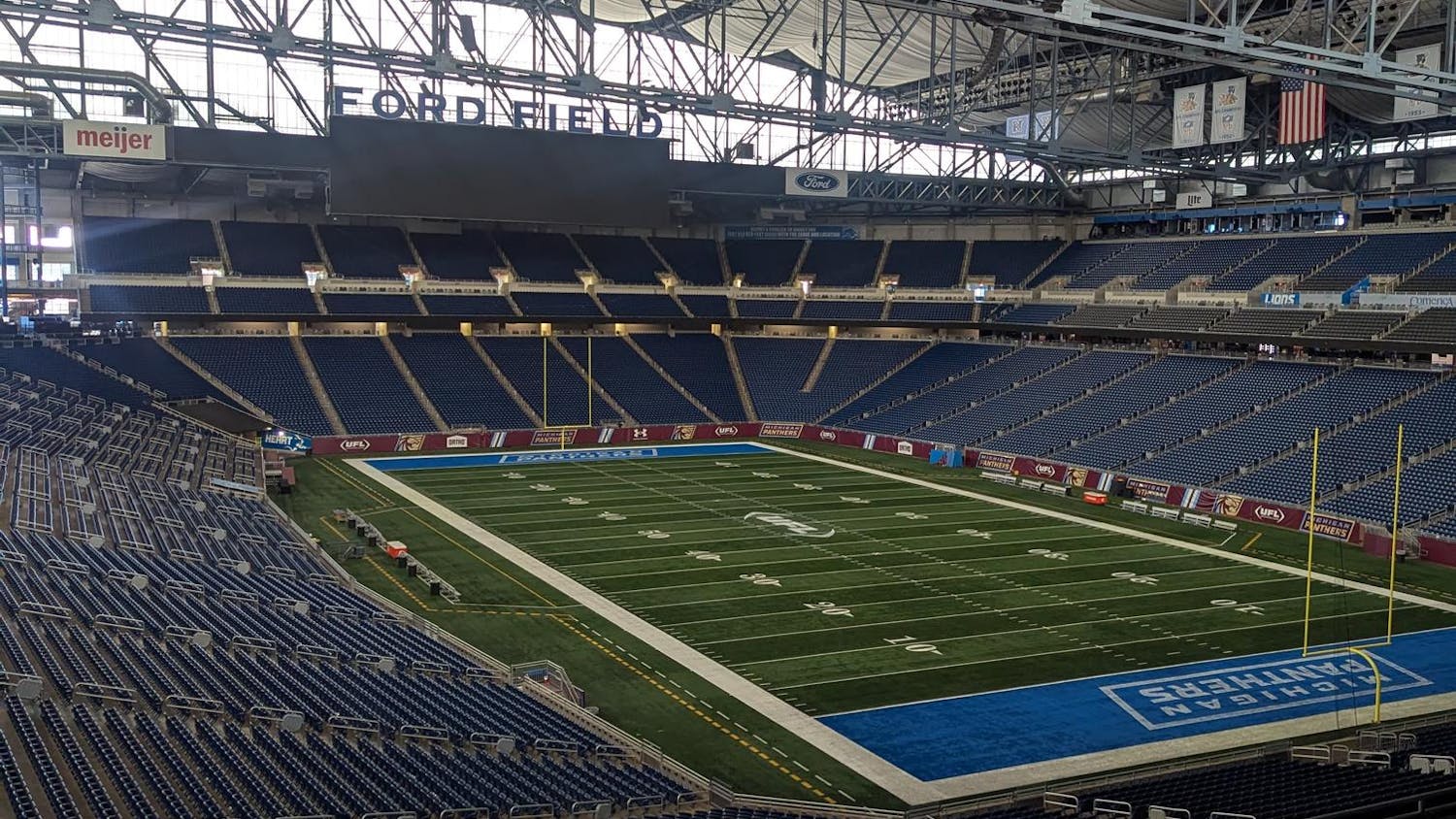The smell of turkey wafted around a room filled with the overlapping conversations of about 130 people and the clink of silverware on plates of wild rice, green beans, cornbread and cranberry sauce.
Held at 6 p.m. Nov. 1 in Student Center room 310, the Fall Feast was the first major event lined up for EMU’s Native American Heritage Month.
A man with a long ponytail stood in front of the room. His clear voice resonated in the air as he pounded his drum while singing an Ojibwe prayer for the food that was provided.
The room listened in respectful silence when Frank Bartley of the Little Traverse Bay Band of Odawa Indians performed at the sixth-annual Fall Feast hosted by the Native American Student Organization and the Center of Cultural Affairs at Eastern Michigan University.
“I have been practicing the hand drum for 11 years,” Bartley said. “It’s a way for me to mesh with my culture. We also call the drum our grandfather. The men sit around the drum, and they are taught values and how to carry themselves in the world. It’s a way of healing for a community.”
Jasmine Culp, 25, and president of the NASO, was pleased with the turnout because about 30 more people showed up, compared to last year’s feast. She has been part of the planning for NASO’s Fall Feasts since her freshman year.
“This is us celebrating the harvest and remembering people who can’t be with us,” Culp said. “It was wonderful to see so many people coming together. The Student Government Senate Board and the CMA were such a great help. My first fall feast was in 2007 at King Hall and we averaged about 20-30 people.”
The event was open to anyone who wanted to attend based on a first-come, first-serve basis.
Before people began to eat, Howard Kimewon, who teaches free Ojibwe lessons at EMU, led a brief Ojibwe prayer traditionally used when people are seated around a ghost plate.
A ghost plate is a tradition in which family members put the food being served on a plate in honor of deceased ancestors. The food is burned so the smell can travel to where the ancestors’ spirits are located.
After the prayer, many guests in attendance said “Miigwetch,” which means thank-you in Ojibwe.
“I’ve had a lot of luck with the students here,” Kimewon said. “There is omething different with this university. I’ve had some excellent students that came out of here and went on to study the language. It doesn’t happen anywhere but here.”
At the end of the feast, Bartley said, in the Native American culture an invitation to dance is given by playing the drum. Members of the NASO joined hands and made their way around the room swinging their arms and performing the grapevine with their feet.
Some guests who were strangers at the start of the dinner stayed until the waiters were cleaning to talk about what culture means to them. One such student was Julie Jenista, 25, who took a class in Native American literature at EMU.
“A lot of schools don’t see Native American stories as being true,” Culp said.
“Their stories are spiritual beliefs, and by calling them myths and children’s stories it’s saying, ‘Oh, isn’t it cute or isn’t it funny.’ It’s sad to undermine a whole group of people and subset a culture.”
The next major event is a poetry reading with Linda Hogan, poet, essayist and author of “Mean Spirit,” at 9 p.m. Nov. 11 in the Student Center.










